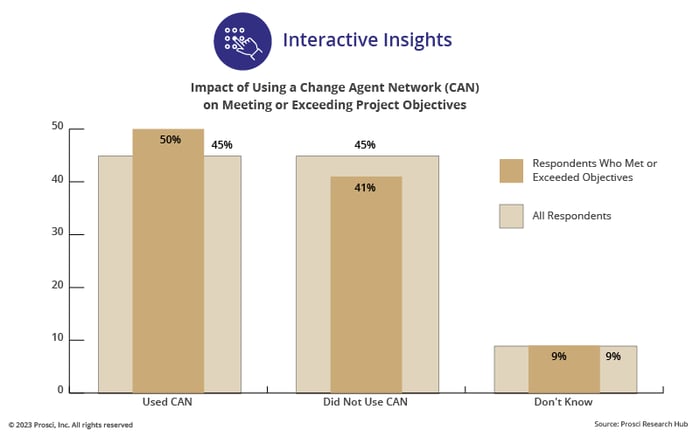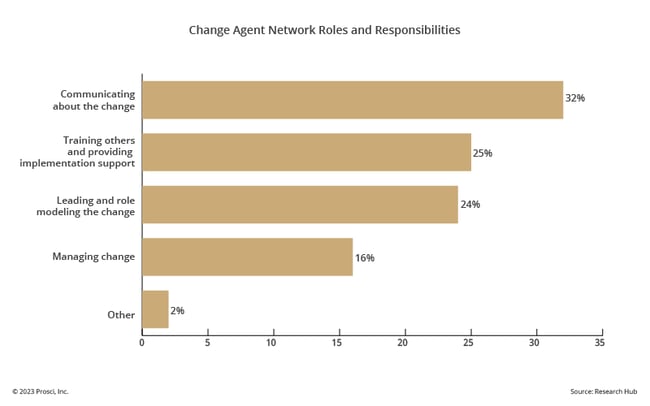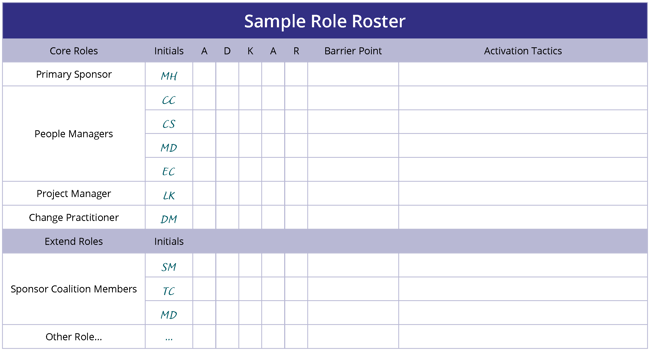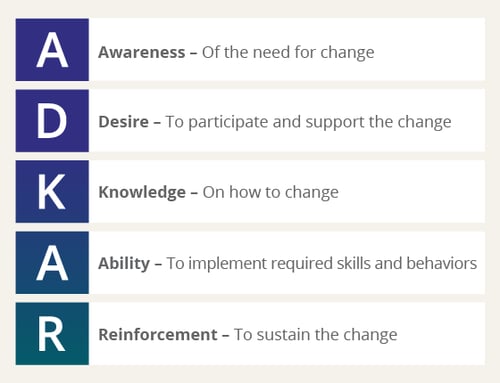Does Your Project Need a Change Agent Network?

4 Mins
Updated: October 17, 2025
Published: October 24, 2023

Are you managing a change project or initiative, and struggling to engage impacted individuals and groups in the change process? If you answered “yes,” your change might benefit from establishing a change agent network.
Change agent networks can enable you to engage impacted individuals more effectively in the change management process and achieve higher success rates for your change projects by doing so. But what exactly are change agent networks responsible for? Does your project require one? Here’s how a change agent network can support your efforts to prepare, equip and support impacted people to adopt and use a change.
What is a Change Agent Network?
A change agent network is a group of individuals who extend the reach, influence and efforts of change leaders (primary sponsor, sponsor coalition members, and people managers) and the change management practitioner. Change agent network members may have a range of titles, including change champions, change ambassadors and change advocates.
Why use a change agent network?
In Prosci’s latest research, respondents who said they employed formal change agent networks reported higher levels of success. Those organizations that deployed a change agent network met or exceeded project objectives 50% of the time, as compared to 41% for those that did not use a change agent network.
Why would you need a change agent network for your project or initiative? Here are some common reasons why a change agent network might be beneficial:
- Extend project support to expedite a change
- Make more efficient use of resources to extend the scope and reach of a change to geographical regions across an organization
- Enhance communication by increasing the flow of information across an organization
- Align change objectives at all organizational levels
- Increase growth of individual change management abilities
- Build credibility for a change through peer-to-peer engagement
- Boost ownership of the change through increased engagement of impacted groups
in Change Management
The primary role of the members of a change agent network is to augment and support the efforts of change leaders and change practitioners to ensure that a change is adopted, used, and delivers the desired outcomes for the organization.
Our research shows that change agents are most often responsible for communicating about the change, followed by training others and providing implementation support, leading and role modeling the change, and generally supporting change management activities.

The criteria for selecting change agents should include an evaluation of their level of influence and credibility with their peers, communication skills, organizational knowledge and subject matter expertise.
Create “I-by” statements for the change agent role
When defining the role of change agents for your unique project or initiative, creating tailored “I-by” statements can be helpful for establishing a common understanding of the role and explain the role to others. The format for an I-by statement is: “I, (role), contribute to adoption and usage by (doing what).”
For example, if you are deploying a change agent network to enable two-way communications about the change between the project team and people in the organization, the I-by statement would look something like this:
“I, change agent network member, contribute to adoption and usage by representing the voice of end users to the project team and communicating key messages about the change to employees in a timely manner.”
How to Build a Change Agent Network
The Prosci 3-Phase Process begins with Phase 1 – Prepare Approach. The purpose of this phase is to position the change for success by developing a customized and scaled strategy with the necessary sponsorship and commitment. During this phase, you identify the required roles to support success for your change and document the roles by developing a role roster.

As you are building your role roster, you should determine if a change agent network is required. Review the previous list of reasons for using a change agent network and determine if any apply to your change. For example, if there is a history of poorly managed change in your organization due lack of engagement of impacted groups in the design of the change and/or the change process, a change agent network will boost ownership of your change by providing increased opportunities for engagement.
The action steps to build a change agent network include:
1. Gain support from your primary sponsor to build a change agent network
Develop a business case for building a change agent network and use it to obtain the support of your primary sponsor. A compelling business case should include an explanation of the benefits of building a change agent network, a definition of the change agent role, the number of change agents required from the impacted groups and an estimate of the time commitment involved. The business case should also define a process for selecting the change agents and the selection criteria they should meet.
2. Select change agents for the network
Engage change leaders to select the change agents who will represent the impacted groups that fall within the leaders’ areas of responsibility. In addition to being willing to take on the change agent role, candidates should be credible, influential, and respected by the impacted people they will support. They should also have a good understanding of the function of the impacted group they are representing.
3. Build the change agents’ Awareness and Desire for the change
A prerequisite for change agents to fulfill their role is that they have Awareness of the need for the change and a Desire to participate and support the change themselves. You should confirm that they do not have barrier points at Awareness or Desire before proceeding to the next step.
The Prosci ADKAR Model

4. Activate and enable the change agents to fulfill their role
Provide change management training and ongoing coaching to the change agents to enable them to develop the Knowledge and Ability they need to effectively fulfill their role.
5. Involve change agents throughout the change process
Involve change agents in augmenting and supporting the work of the project and change management teams. Provide ongoing direction by holding regular meetings with the change agents to ensure alignment with the project objectives, foster two-way communications, gather feedback on progress, and identify the need to take adaptive actions to ensure change success.
6. Engage change agents in a lessons-learned assessment
Following the completion of a change, obtain feedback and suggestions from the change agents when conducting the lessons-learned assessment. Ask for input not only on how the change was managed, but also on the formation and operation of the change agent network. This information can be extremely helpful when building change agent networks for future projects.
Elevate Change Success With
Change Agent Networks
Change agent networks can be a powerful and effective tool for implementing your change management strategy and plans. By deploying the right network of willing, capable and influential people with a clear role and responsibilities, you can increase the probability that your change will meet or exceed project objectives and realize organizational benefits.




